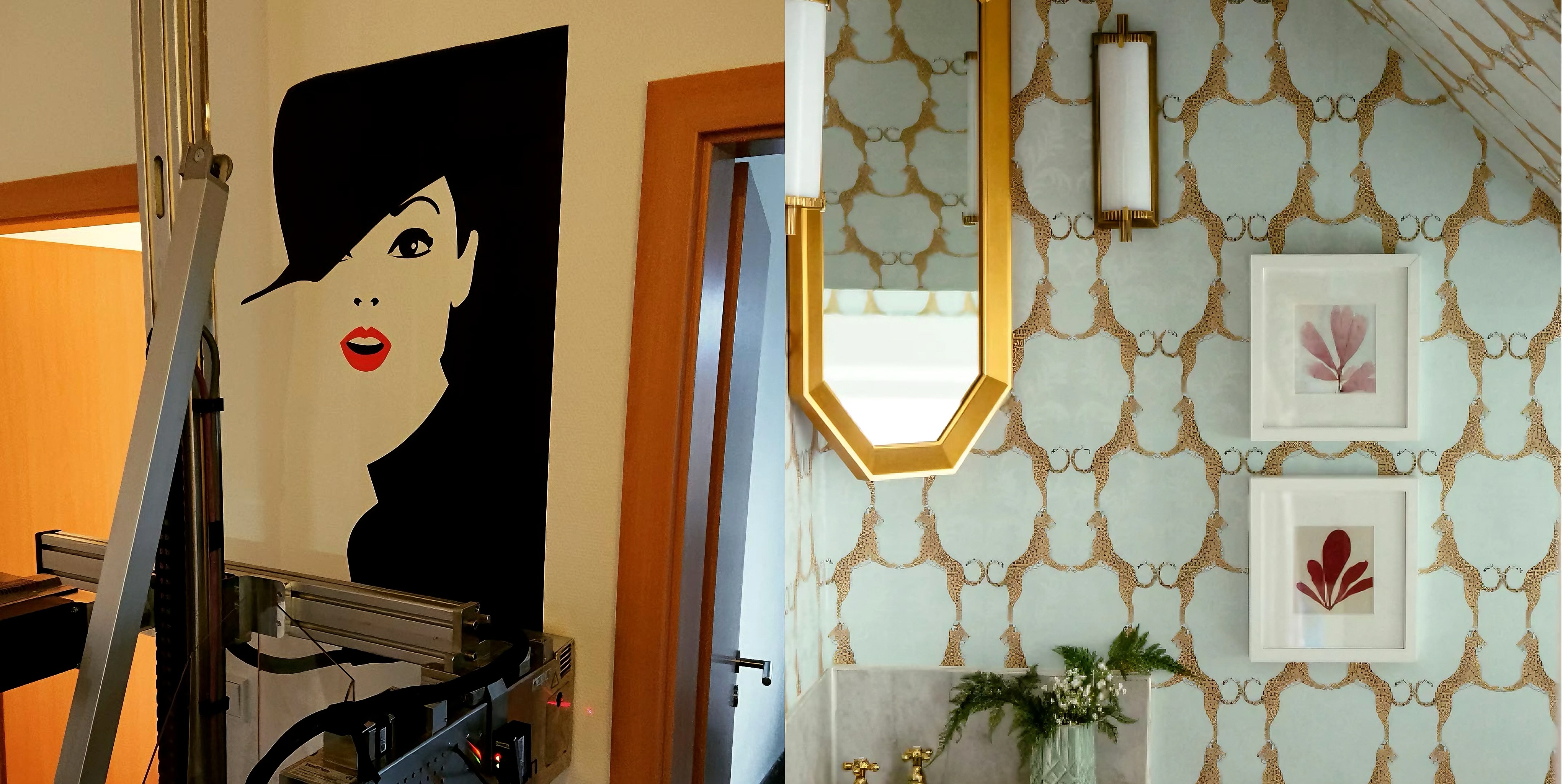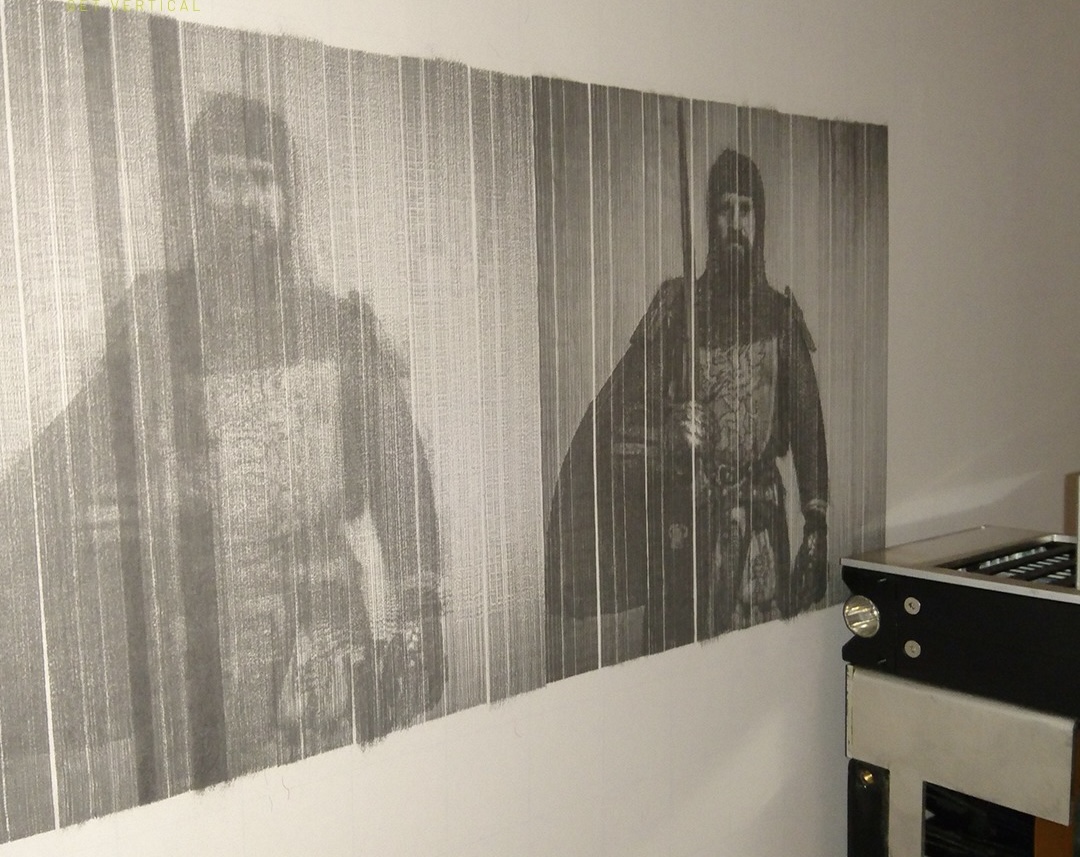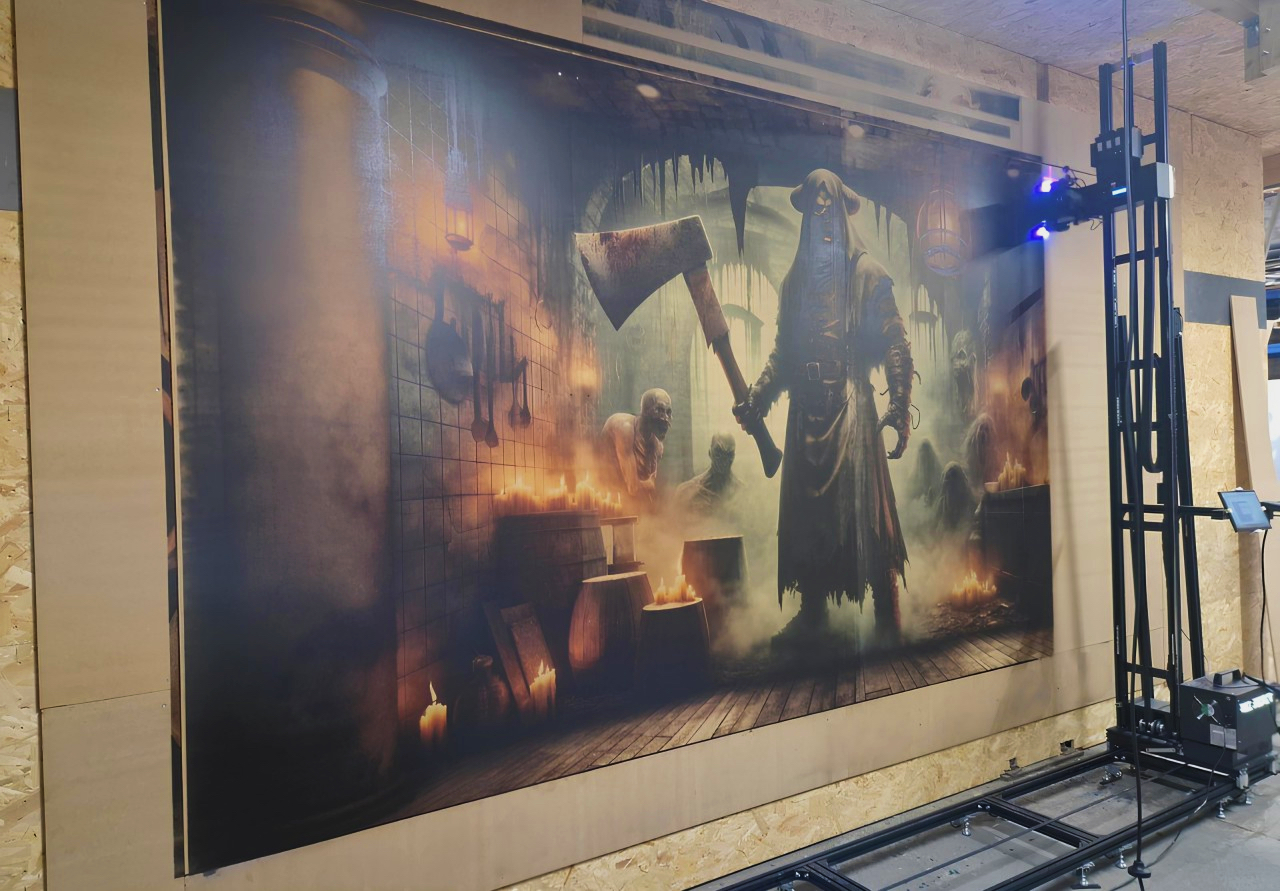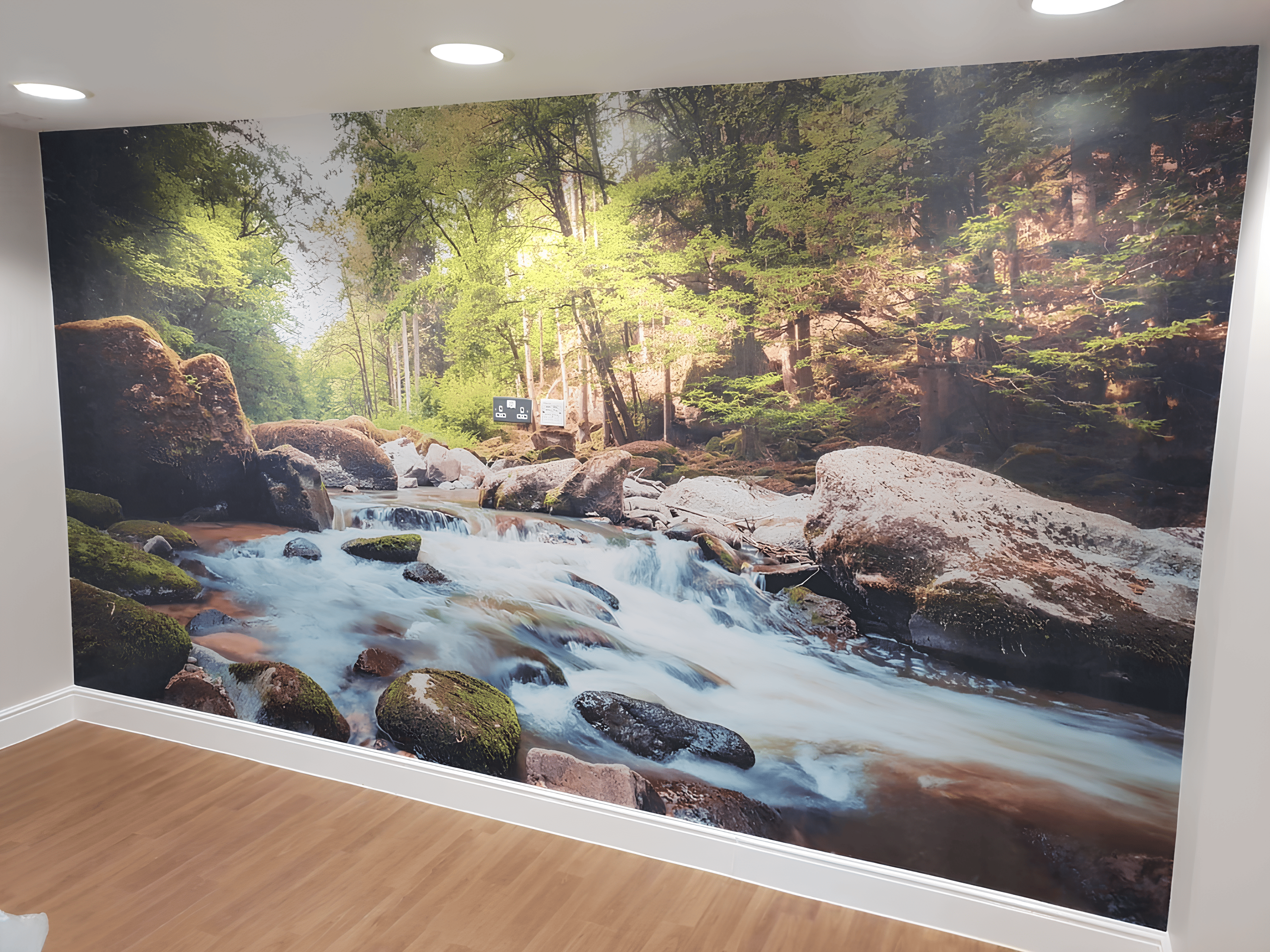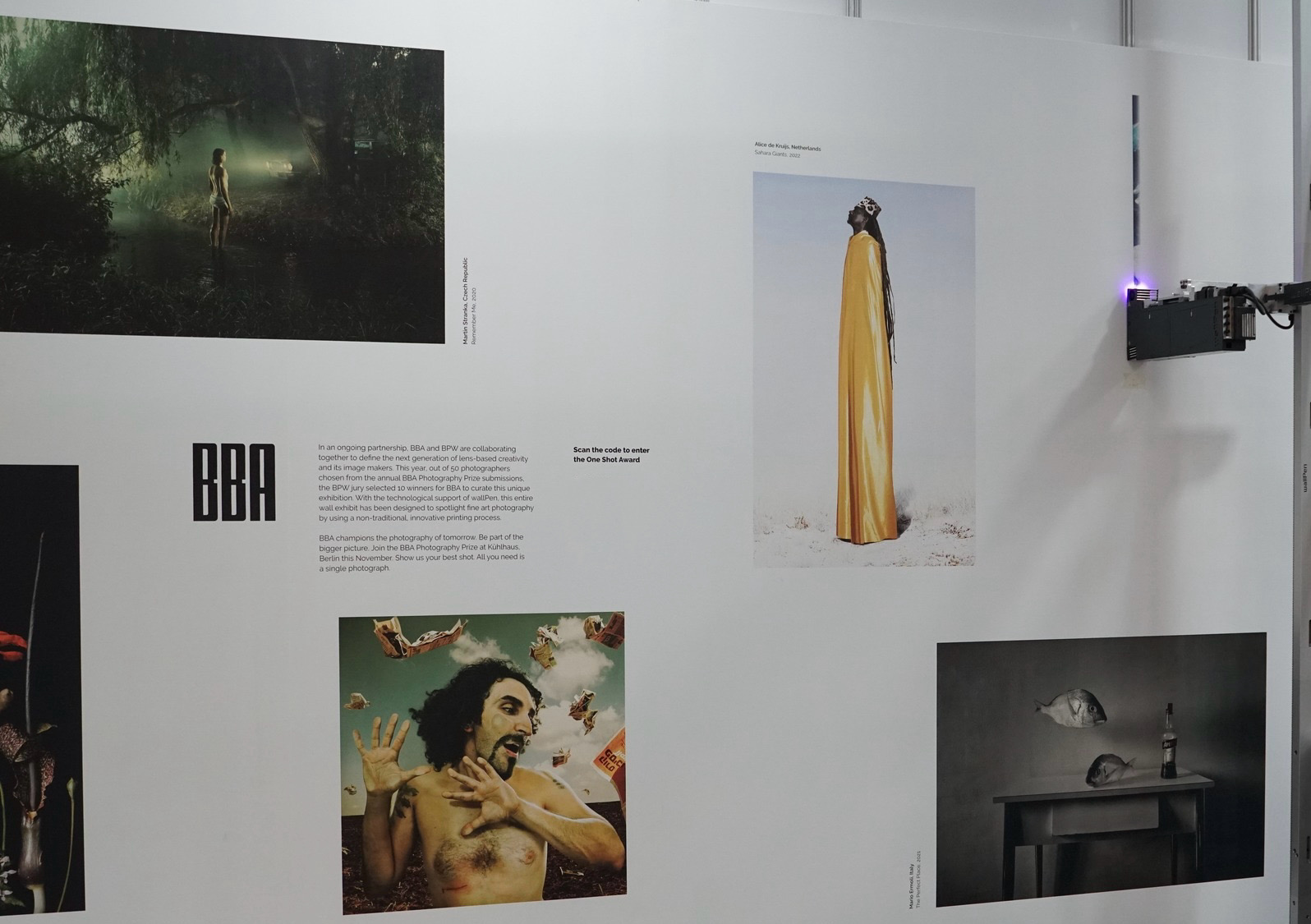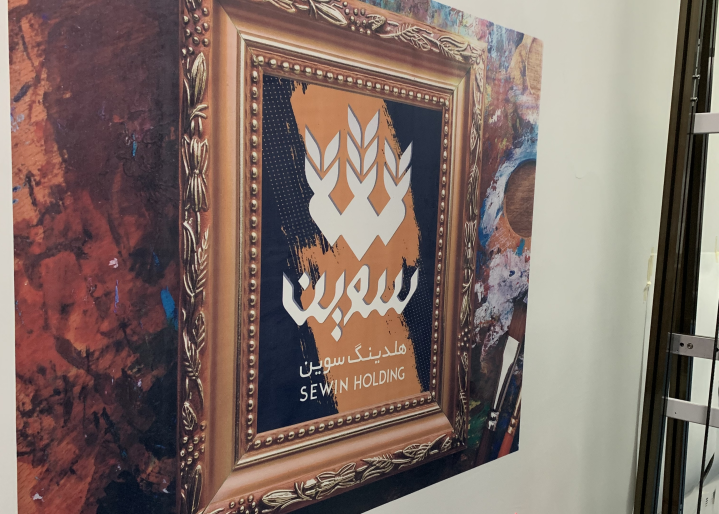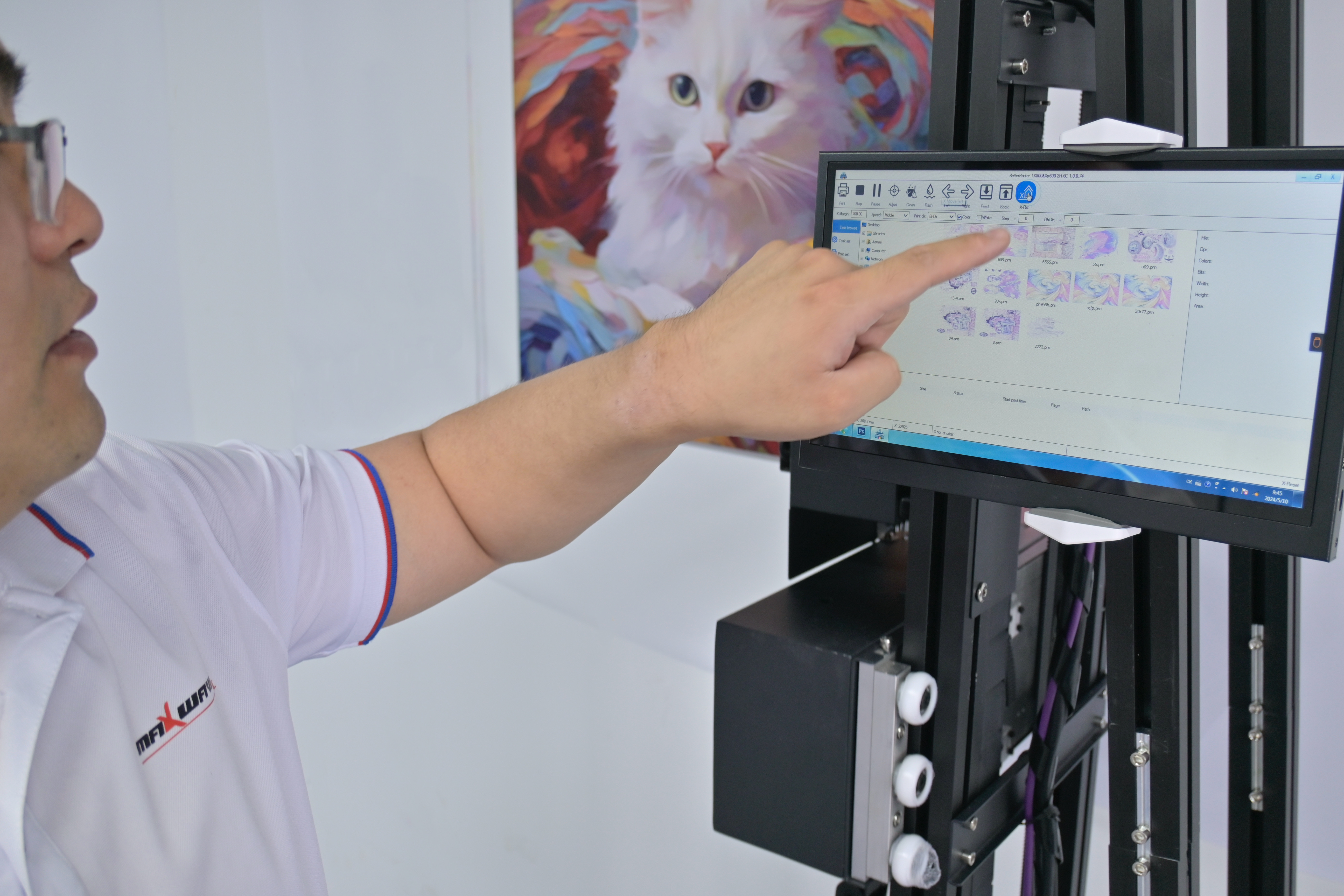Redecorating your walls used to mean choosing between pre-made wallpaper patterns or spending hours painting by hand—but now, wall printers are changing the game. Imagine turning your favorite photo, artwork, or custom design into a full-wall mural in just a few hours. With modern technology, you can combine speed, precision, and creativity like never before. But is a wall printer really better than traditional wallpaper for your home? Let’s explore the key differences so you can make the right choice.
Introduction: Wall Printer vs. Wallpaper – Making the Choice
In modern interior design, you have a big decision: use a wall printer or wallpaper? Based on my experience, both are great for updating plain walls. Each option has its own benefits and drawbacks. I’ll help you break them down.
Key Things to Think About
| Feature | Wall Printer | Wallpaper |
|---|---|---|
| Design Options | Customizes any photo or design into large wall art;Unlimited creative potential | Limited to pre-made patterns;Creativity restricted to market designs |
| Durability | Durable with proper ink, prep, and coating | Long-lasting with quality material |
| Installation Speed | Fast digital setup and printing | Slow installation with alignment and glue |
| Cost Structure | Costs tied to equipment or service fees | Costs depend on material and difficulty |
| Eco-Friendliness | Eco-friendly inks available | Some sustainable options available |
| Maintenance | Easy to clean with protective coat | Maintenance varies; some types delicate |
Making Your Final Choice
So, should you choose a vertical wall printer or wallpaper? I suggest you think about these key factors and what your specific project needs. Understanding your priorities will guide you. Think about creativity, budget, installation effort, and maintenance. This will help you decide which method is the right fit for your space.
What is Wall Printing?
I see wall printing as a new way to put high-quality images, murals, or artwork onto your walls. You can print on many vertical surfaces. Unlike old methods, a wall printer is a special digital tool. In my experience, it uses UV-resistant inks. This helps the designs stay colorful and last for a long time.
How Wall Printers Work
These printers move along the wall to create detailed, colorful prints, and they work on a wide range of surfaces such as plaster, concrete, glass, wood, and tiles. For the best results, it’s important to prepare the wall properly and keep it smooth before printing.
Key Features of Wall Printing
- Versatile Applications: I suggest using wall printers for unique decorations. They work well in homes, offices, retail stores, and public areas.
- High-Resolution Results: You can expect sharp, detailed images. They are UV-resistant, which I find helps stop fading from sunlight or indoor lights.
- Technical Requirements: From my experience, running a wall printer takes some technical skill. You also need to prepare digital files and set up the machine carefully.
- Surface Preparation: I suggest cleaning or priming surfaces before you print. This helps the ink stick to the wall and makes the image come out sharp.
What is Wallpaper?
Wallpaper is a decorative covering for your walls. It comes in sheets and gives you many options to change how a room looks. Most wallpaper is mass-produced. You can also get custom murals, which I think are great for creating a unique feature wall. In my experience, wallpaper remains a classic way to change the mood or style of a room.
Types of Wallpaper Materials
- Vinyl Wallpaper: I find this type is durable and easy to clean. It’s a great fit for high-traffic areas like kitchens and bathrooms.
- Peel-and-Stick Wallpaper: This option is simple to install and remove. I suggest it for renters or if you want to make a quick update.
- Paste-the-Wall Wallpaper: This type is designed for a smoother application. I’ve seen it save time during installation.
Personal Opinion on Wallpaper Choice
Based on my experience, wallpaper is an effective choice for both short-term and long-lasting style updates. The price depends on the material and if you choose standard rolls or custom murals. I believe you can find a good solution for any budget.
Personalization & Design Flexibility
If you want to give a space a unique look, I believe a wall printer machine offers almost limitless design choices. You can print any image, photo, detailed pattern, or even lifelike art right onto your wall. This lets you create designs for a specific room. Based on my experience, it’s perfect for a mural in a kid’s room, a single feature wall, or adding a company logo to an office. You are not limited by repeating patterns. Each wall can be a unique work of art.
On the other hand, wallpaper usually uses repeating designs or textures on a wall. You can find custom mural wallpapers, but I feel their design options are more restricted than printing on the wall. Custom wallpaper can help you create a bold feature wall. It just doesn’t provide the same level of creative freedom that a wall printer does. I suggest using wallpaper if you are looking for a uniform style or a simple background for your room.
Summary Table: Personalization Features
| Category | Wall Printer | Wallpaper |
|---|---|---|
| Image Options | Any artwork or photo | Set patterns, limited customization |
| Creative Freedom | No design restrictions | Pattern and repeat constraints |
| Best Use | Custom, unique art/murals | Uniform style, subtle backgrounds |
| Level of Flexibility | Very high | Moderate (higher with murals) |
Installation Process & Time
Wall Printer Installation: Fast and Efficient
For installation speed, I think a wall printing machine is tough to top. In my experience, printing a full-wall mural takes just a few hours, not days. This speedy process is a huge plus because it causes less of a mess in your home or business. I’ve also found that wall printing requires less work than wallpapering. This means you get your space back to normal much faster.
Keep the wall clean and as even as possible, though modern wall printers can produce high-quality results on slightly uneven surfaces. Operating the printer still requires some skill to handle the machine and prepare digital files correctly.
Wallpaper: A Slower, More Hands-On Process
From my point of view, installing wallpaper involves more steps. With traditional wallpaper, you have to cut it, precisely match the patterns at the seams, and then stick it to the wall with paste. Getting the alignment just right is crucial for a good result, and I’ve seen how hard it is to fix mistakes. This whole process takes much longer than printing on a wall. It can easily take a full day, or even more for a big room or a tricky pattern.
You can find simpler options, such as custom murals with a peel-and-stick back. I think these are great for do-it-yourself projects and can save some time. Still, I believe putting up any kind of wallpaper takes more effort and time than a wall printer job.
Removal and Cleanup
Here’s one last thing I want to mention: removing wallpaper can be a real mess. From my experience, it often leaves a sticky residue or can even pull off parts of the wall. This means more repair work for you later. A printed mural is more permanent, but the wall preparation at the start helps ensure a clean look that lasts.
Quick Comparison: Installation
| Criteria | Wall Printer | Wallpaper |
|---|---|---|
| Speed | Hours for a full-wall mural | Often a day or more |
| Labor Required | Minimal | More hands-on; precise work needed |
| Technical Skill | Operator must be trained | DIY possible, but professional installation is best |
| Removal/Changes | Permanent, clean finish | Can leave residue or cause wall damage upon removal |
Durability & Maintenance: Wall Printer vs. Wallpaper
If you’re deciding between wall printing and wallpaper, I think durability and maintenance are crucial. Let me break down my experience with both to help you decide:
Wall Printer: Built to Last and Easy to Care For
From my experience, digital wall printers create a durable finish with UV-resistant inks, so the artwork doesn’t easily fade, peel, or get sun-damaged—even in bright rooms where colors stay vivid for years. They also stand up well to daily wear and tear, making them ideal for high-traffic spaces like offices or schools, without issues like seams lifting or surfaces bubbling. On top of that, maintenance is simple, as a soft cloth and gentle cleaner are all it takes to keep the wall looking fresh, with no special care required.
Wallpaper: A Classic Look with Mixed Durability
From my experience, the material is key—vinyl wallpaper is durable for kitchens and bathrooms, but even quality types can peel, bubble, or fail at the seams in humid rooms or on uneven walls. Cleaning is tricky, since many wallpapers are delicate; while some are washable, cheaper ones often stain or tear easily. Over time, repairs and removal are messy, with seams needing fixes and old wallpaper leaving a sticky film that requires wall repair before reapplication.
Quick Comparison Table: Durability & Maintenance
| Feature | Wall Printer | Wallpaper |
|---|---|---|
| Sunlight Resistance | UV-resistant, won’t fade | Can fade or peel at seams |
| Durability | Very durable, no peeling or bubbling | May bubble or peel in humid areas |
| Cleaning | Easy, just wipe | Some types delicate, hard to clean |
| Removal | Permanent, no residue | Hard to remove, may leave residue |
My Take: If you want something that lasts long and is easy to care for, I recommend wall printing. This is my top suggestion for busy homes or commercial spaces. Wallpaper looks nice, but from my experience, it needs more work and might not hold up as well in demanding areas.
Cost & Money Guide: Wall Printing vs. Wallpaper
To update your walls, cost is a big factor. Wall printing and wallpaper have different price points. I believe it’s useful to see where your money goes with each option over time.
Wall Printer Cost Breakdown
From my experience, wall print machines come with a high initial cost due to the technology needed for direct wall printing. However, they offer lower ongoing costs, as printing is fast and requires less labor than traditional methods—ideal for large projects or frequent updates. The long-term value is significant, too, since wall-printed designs are durable and need fewer repairs, saving money on upkeep and making them a smart choice for busy areas.
Wallpaper Cost Breakdown
From my experience, wallpaper has lower upfront costs, making it a popular choice for quick, budget-friendly style updates. However, it often leads to higher costs over time, as designs go out of style, seams peel, or walls get damaged—repairs and replacements add up, especially in busy or humid rooms. While it offers flexibility for frequent changes, redecorating often or poor initial installation can significantly increase long-term expenses.
Quick Economic Comparison
| Category | Wall Printer | Wallpaper |
|---|---|---|
| Initial Equipment | High (printer cost or service fee) | Lower (cost of rolls and adhesive) |
| Labor | Low ongoing cost due to speed | Higher for careful application |
| Long-Term Maintenance | Minimal; durable, seldom needs repair | Can be higher; needs fixes and updates |
| Replacement | Seldom needed | May be needed often, which raises costs |
| I recommend it for | Long-term projects, commercial or residential | Short-term updates, budget-friendly homes |
My Opinion: I suggest wall printing if you want a big, unique mural. It’s also a smart investment if you want something that will last without future bills. If you prefer low start-up costs and like to redecorate often, I’d go with wallpaper. It keeps more cash in your pocket at the beginning. Just be ready for extra costs down the line.
Green Walls: Is a Wall Printer or Wallpaper Better for the Planet?
If you want eco-friendly wall decor, you should look at how each option affects the environment. Both wall printers and wallpaper offer choices for people who care about being sustainable. Here’s my take on how they compare:
Wall Printer: Low-Waste Inks
Inkjet wall printers use UV-based, eco-friendly inks that produce less waste and release no strong chemicals, unlike traditional wallpaper. The process creates almost no leftover material, and there’s no need for glues or extra installation supplies, reducing mess and environmental impact. For a smaller footprint, I recommend choosing wall printer services that use no-emission, nature-friendly inks.
Wallpaper: Material Choices and Waste
Quick Comparison: Sustainable Wall Design Choices
| Category | Wall Printer | Wallpaper |
|---|---|---|
| Ink/Material Use | Uses UV-based inks with minimal waste | Creates waste from trimming, glues, and removal |
| Installation Impact | No glues needed; no emissions | Involves adhesive chemicals and more material waste |
| Green Options | I suggest printers using certified “green” inks | Look for peel-and-stick or recycled wallpapers |
| Waste After Removal | No material left; the design becomes part of the wall | Can leave sticky residue and generates waste |
My Opinion: To choose the most eco-friendly option, research specific brands and materials. Modern wall printing produces almost no waste and is generally more environmentally friendly. While wallpaper quality is improving, you need to actively select eco-friendly types. If sustainability is a priority, I recommend going with a wall printer.
Wall Printer vs. Wallpaper: My Take on the Downsides
If you’re deciding between a wall printer and wallpaper, you should know the problems you might face. Based on my experience, both have their own downsides. I want to share my thoughts on the limits of each, looking at how they are installed, their quality, cost, and design options.
My Concerns with Wall Printers: Surfaces and Skills
- Wall Surface Problems: From what I’ve seen, wall printers need a smooth and clean wall. Without it, the image won’t look sharp. If your wall has texture or is uneven, the final print can appear distorted. I think this is a major issue in older homes with plaster walls.
- Requires Special Skills: Using a wall printer is not an easy DIY job. I feel you need a trained operator. This person must know how to prepare files, adjust the printer, and set it all up. This makes it impractical for most homeowners to do themselves.
- High Cost and Access: I find the cost to buy or rent a wall printer is steep. If you have a small, one-time project, the price might not be worth it. I recommend them for businesses or professionals who plan to use the machine often.
However, one product addresses these challenges very well—the MaxWave GP200L 3d wall printer machine. It features an automatic sensor that detects uneven surfaces and adjusts the print head distance accordingly, ensuring sharp, clear results. With its integrated software, even beginners can learn to operate it in just 20 minutes, making it very user-friendly.
Wallpaper Problems: Installation and Durability
- Tough to Install: I know from experience that putting up wallpaper can be tricky. It is hard for DIYers to avoid mistakes. If the seams aren’t aligned just right, they will show. Matching patterns is also a common struggle. A few small errors can make the whole wall look unprofessional.
- Damage from Moisture: I’ve seen wallpaper fail in damp places. It doesn’t hold up well in high-humidity rooms like kitchens or bathrooms. The edges might start to peel, or bubbles can form. This means you might have to repair or replace it sooner than you expect.
- Fewer Custom Options: You can find some custom mural wallpapers. Still, most choices are just pre-made, repeating patterns. If you want a unique design from your own photo, I think wallpaper is too limiting. A wall printer gives you much more creative freedom.
Summary Table: Main Limitations
| Category | Wall Printer | Wallpaper |
|---|---|---|
| Surface Compatibility | Needs very smooth surface | Can hide some minor flaws |
| Skill/Technical Needs | Operator must be trained | DIY possible but tricky to master |
| Initial Cost | High for machine/service | Lower, but can add up with mistakes |
| Design Flexibility | Unlimited, even for DIY | Limited to available or custom designs |
| Suitability for Wet Areas | Good | Risk of water damage; limits use |
My Final Thoughts: Consider these factors carefully. Modern wall printers are easy to use, even for beginners, though they cost more. Wallpaper is simpler to buy and install but less durable in humid areas and limits personalization. Choose based on your room, skills, and desired style.
So, Which is Better for Your Modern Home?
Are you deciding between a wall printer and wallpaper? I think the best choice depends on your space, needs, and style goals. Both have their strengths and a few drawbacks.
Choosing the right option for your modern home means weighing the advantages of wall printers versus wallpaper. Wall printers offer unmatched customization, durability, and low maintenance, allowing you to print any image, gradient, or artwork directly on the wall. They are eco-friendly, easy to clean, and ideal for high-traffic areas. Wallpaper, on the other hand, has lower upfront costs and can be changed relatively easily, but it is more delicate, less customizable, and often suffers in humid or high-traffic rooms, leading to more repairs and waste over time.
So, which is better for your modern home? If you value unique designs, long-lasting results, and minimal maintenance, a wall printer—especially a user-friendly option like the MaxWave GP200L—offers the most practical and creative solution. If you are on a tight budget or prefer a quick, temporary style update, wallpaper may still be suitable. Ultimately, it depends on your priorities: creativity and durability versus cost and simplicity.
Sumamry
Whether you’re looking for fully customized murals, long-lasting durability, or eco-friendly printing, wall printers offer a modern solution that wallpaper simply can’t match. For homeowners or designers who want to make a statement and minimize upkeep, investing in a wall printer—like the user-friendly MaxWave GP200L—can transform your space quickly and beautifully. Don’t wait—bring your walls to life and start your inquiry today!

